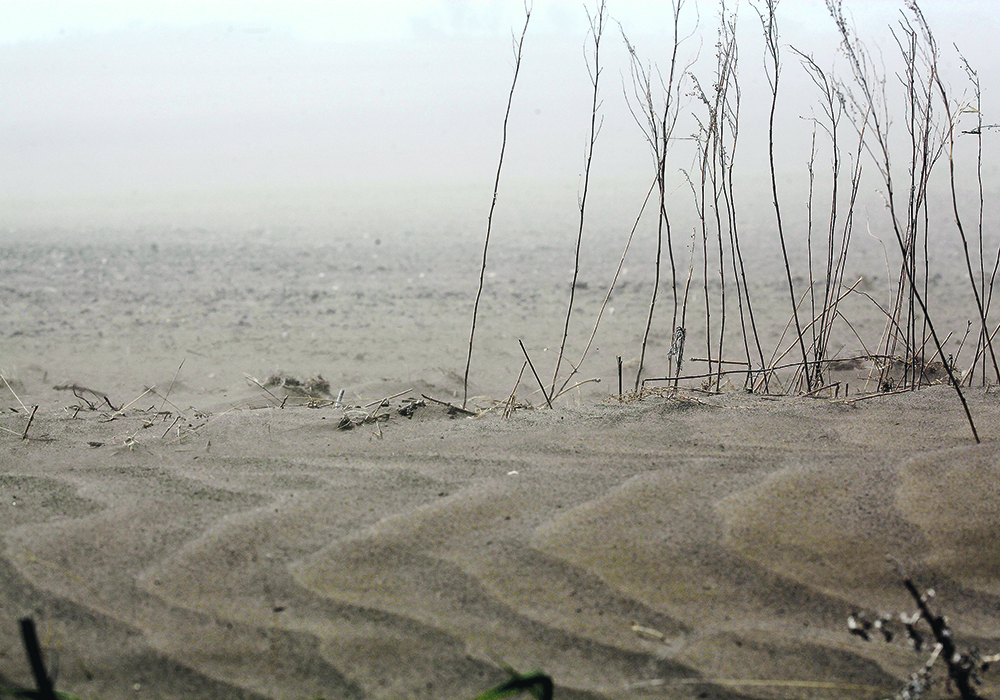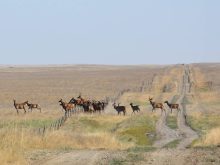Farmers through parts of southern Saskatchewan and Manitoba are looking for more rain after weeks of windy, dry conditions have depleted soil moisture.
Even after a system moved through last weekend the rainfall wasn’t enough to move some regions out of moderate drought conditions.
Agroclimate specialist at Agriculture Canada Trevor Hadwen said the area of most concern is Moose Jaw to Regina and south to Assiniboia.
Using precipitation percentiles as a measurement, the Moose Jaw area is in the second percentile; 98 years would be wetter than this one.
Read Also

Bunge’s crop mix is changing
Bunge has predominantly been a soybean processing firm, but that’s about to change after the merger with Viterra with softseed processing and grain merchandising gaining ground.
“The reason that you haven’t heard a lot about drought this spring likely is because we had that great moisture last fall,” Hadwen said.
But a dry winter, a very dry spring, and unrelenting wind have created abnormally dry conditions that are becoming worse for many. He said farmers are starting to express concern about topsoil, subsoil moisture and water supplies.
Environment Canada meteorologist Terri Lang said the winds this spring haven’t actually been all that unusual. Although records aren’t kept for wind speed she noted that through May the average speed was lower than usual.
Still, farmers have watched seeded crops blow away before germination and the soil moisture evaporate.
Some have said it’s the driest spring they can remember.
Hadwen said the moisture deficit of seven to 10 centimetres in the moderate drought area won’t be made up with sporadic showers. However, if a general soaking isn’t in the cards those showers are critical.
“It won’t alleviate the drought situation that we’re in. It will get us through the next couple weeks but it certainly will not build up those moisture reserves that we need for the summer months,” he said. “It’s pushing that can down the road a little bit and buying us some time but we’re not going to fully recover from the situation that we’ve built up over the last six months.”
Other moderate drought areas include a pocket in the far southeast of Saskatchewan, while the entire southeast, slicing diagonally between Saskatoon and Regina, has received below normal precipitation.
Much of Manitoba has received below normal precipitation over the past 90 days.
One area of concern is one that doesn’t immediately come to mind: the Red River region that flooded earlier this year.
“That area hasn’t received very much precipitation and areas outside that flood plain are very dry as well,” Hadwen said.
The region is doing fine thanks to a lot of fall moisture reserves but bears watching. Other areas to watch include the northwest and the Interlake.
“As we move through the summer if we don’t start to get some rain pretty soon we’re going to start hearing some concerns,” Hadwen said.
Much of the rainfall last weekend was in Alberta and west-central Saskatchewan.
While most Saskatchewan farmers appreciated it, Albertans didn’t need it.
“They’ve been fairly wet through that Red Deer-Edmonton-Calgary corridor,” Hadwen said.
Some are expecting widespread drowned crops in the super-saturated area around Edmonton.
The driest part of Alberta is around High Level. The east-central part of Alberta, that was very dry last year, is still slightly below normal but in a much better state.
“Even Brooks and Medicine Hat are above normal,” he observed.
To find the latest maps check out Agriculture Canada’s Drought Watch site.

















